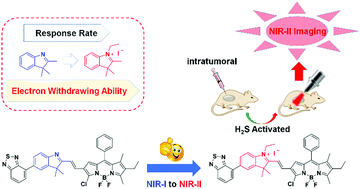An electron-deficiency-based framework for NIR-II fluorescence probes†
Abstract
Fluorescent probes in the NIR-II region provide high bioimaging quality. Optimizing the probe structure to achieve NIR-II imaging is ongoing, but remains challenging. Herein, increasing the electron withdrawing ability of the substituent in monochlorinated BODIPY greatly adjusted the emission wavelength from the NIR-I to NIR-II region, giving an efficient design strategy of NIR-II probes.

- This article is part of the themed collection: Journal of Materials Chemistry B Lunar New Year collection 2021


 Please wait while we load your content...
Please wait while we load your content...